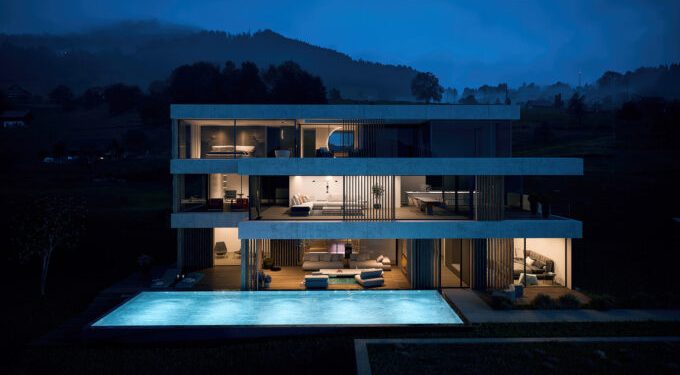Introduction
In the dynamic world of architecture and design, the use of renderings services has emerged as a groundbreaking tool that has revolutionized the way architects, designers, and clients perceive and interact with architectural objects, be it interiors or exteriors.
This article explores the remarkable world of 3D Render Vision, shedding light on its profound impact on the industry, its benefits, and its potential to shape the future of architectural design.
The Evolution of Architectural Visualization
Traditionally, architects relied on 2D drawings and blueprints to communicate their design concepts. While these methods were effective to a certain extent, they often left room for misinterpretation and lacked the ability to convey the full experience of a space. Enter 3D visualization, a game-changer that allows architects and designers to create lifelike, immersive representations of their visions.
Bringing Designs to Life
One of the most striking advantages of 3D visualization is its ability to breathe life into architectural concepts. By employing advanced software and rendering techniques, designers can craft realistic representations of buildings, interiors, and landscapes. Clients and stakeholders can explore these virtual spaces, gaining a comprehensive understanding of the design long before construction commences. This not only enhances communication but also facilitates well-informed decision-making.
Enhanced Collaboration and Communication
Effective communication is at the heart of any successful architectural project. 3D visualization tools act as a universal language, bridging the gap between architects, clients, and contractors. Clients can provide feedback and make informed decisions based on their virtual experiences, while architects can more effectively convey their creative ideas and address any concerns. This synergy fosters collaborative relationships and ensures that everyone is on the same page throughout the design and construction process.
Savings in Time and Costs
In the world of architecture, time is money. 3D visualization has the potential to streamline the design and construction process, ultimately saving both time and costs. By identifying design flaws or potential issues early on in the virtual phase, costly changes or delays during construction can be minimized.
Additionally, clients can have a clearer understanding of the project’s scope, reducing the likelihood of costly revisions later in the process.
Sustainability and Environmental Impact
3D visualization tools have also opened up new avenues for architects to explore sustainability and environmental impact. Designers can simulate the effects of natural lighting, airflow, and energy consumption within a 3D model, allowing for more informed decisions on sustainable building materials and practices. This focus on eco-conscious design is crucial in an era where environmental considerations are paramount.
The Future of Architectural Design
As technology continues to advance, the possibilities for 3D visualization in architecture are limitless. Virtual reality (VR) and augmented reality (AR) are becoming increasingly integrated into the field, offering immersive experiences that were once confined to science fiction. With these emerging technologies, architects can walk clients through their projects in real time, creating a more profound connection to the design.
Conclusion
3D visualization has emerged as a transformative force in the world of architectural design, transcending the boundaries of traditional methods and redefining how we envision and create architectural objects. Its ability to bring designs to life, enhance collaboration and communication, save time and costs, and promote sustainability make it an invaluable tool for architects and designers worldwide.
As technology continues to evolve, 3D visualization is poised to play an even more significant role in shaping the future of architectural design, promising a world where creativity knows no bounds, and architectural dreams become immersive realities.

























